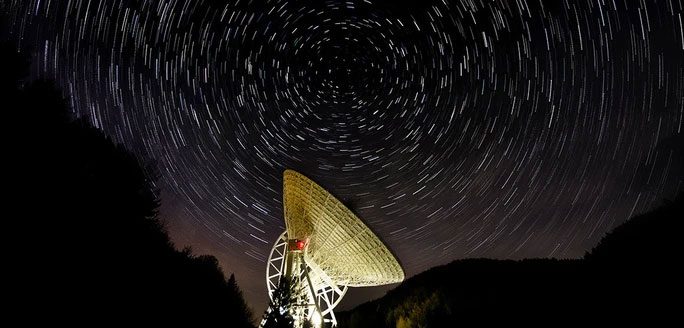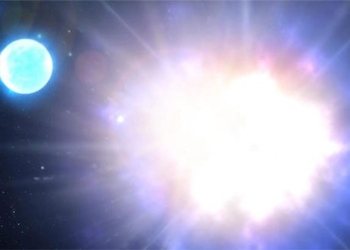The suspected culprit behind the repeated bursts of radio waves bombarding Earth includes a series of the most terrifying cosmic objects and even extraterrestrial beings. Scientists may have found the answer.
A new study led by the Max Planck Institute for Radio Astronomy (Germany) and the University of Manchester (UK) suggests that one of the sources emitting these radio bursts could be a type of cosmic “monster”: magnetars.

Effelberg Radio Telescope – (Photo: MAX-PLANCK-GESELLCHAFT).
According to Space.com, the long-standing suspicion related to this type of fast, explosive radio signal has surrounded these terrifying neutron stars.
While normal stars like our Sun die by exploding and collapsing into a small yet dense white dwarf, neutron stars are another type of stellar corpse that is “extremely deadly”, emerging from supermassive stars. These stars possess a terrifying magnetic field, with material so dense that a tablespoon from one would weigh as much as Mount Everest!
The magnetic field of a typical neutron star is thousands of trillions of times stronger than Earth’s, while a magnetar’s field is 1,000 times stronger than that of a regular neutron star. Only 30 magnetars have ever been identified in the universe.
Astronomers have detected radio emissions from 6 of these magnetars.
By exploring the structure of these 6 magnetars using the Effelberg Radio Telescope in Germany, the research team determined that magnetars indeed achieve a universal ratio of pulse structures and rotational motion, enabling them to emit intense radio waves.
This suggests that they themselves could be one of the culprits behind the radio bursts, without necessarily requiring a collision between two neutron stars or between a neutron star and a black hole, as previously thought.
According to Dr. Ben Sappers, a member of the research team, identifying at least some radio bursts originating from magnetars helps us further understand this mysterious object through the intervals between signals and various other factors.
The team’s research has just been published in the scientific journal Nature Astronomy.





















































